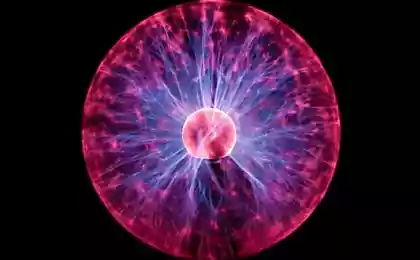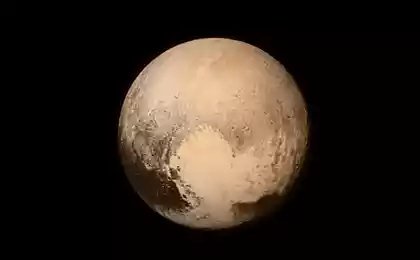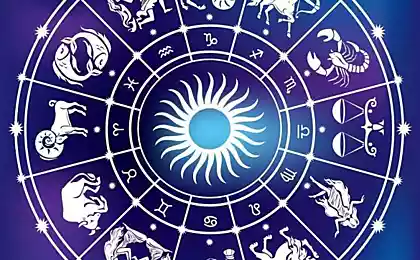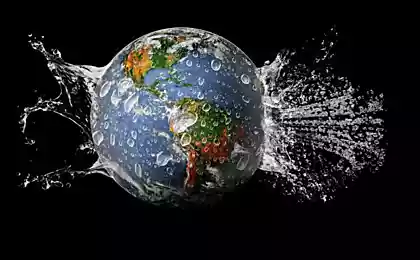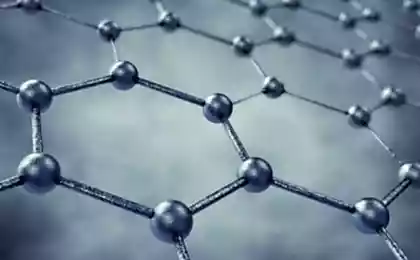579
10 common misconceptions about ancient life on Earth
Movies like "Jurassic Park" part is great because is based on facts. Wait, based? Of course, in the film, the Director tries to show dinosaurs and other ancient life forms as accurately as possible.

But the fact is that scientists do not know exactly how looked ancient life, though trying to reconstruct her. Constantly there are new discoveries that shed light on what we don't know about the first life forms of the Earth — and this sometimes causes us to rewrite the textbooks.
Life and Earth have evolved together
Most of us think that when the Earth was formed, then the seas came life. This is partly true, but no one knows exactly how did the first life. And appearing, life immediately began to influence the planet's surface. Without plants that pulverize the rocks into the sediment, for example, would not be enough materials to form the tectonic plates, and hence the continents. Without plants, Earth would be a water world.
Believe it or not, more complex life can even change the structure of the global glacial periods, making them less serious "regulatory feedback". Intermittent picture freezing and thawing takes billions of years back in time when Earth didn't have the complex web of life that exists today. Then the glaciers stretched from the poles to the equator, disrupting the entire planetary order.
Since then, as more and more of the life filled surface and sea ice the Earth formed huge glaciers at both poles on a few fingers stretched out in terms of latitude, which never reach the equator.
542 million years ago on Earth there was something mysterious
Experts call sudden increase in the diversity and richness of the fossil record of the Earth, which began 542 million years ago, the "Cambrian explosion". He puzzled Charles Darwin. Why all the ancestors of modern animals appeared literally overnight, geologically speaking?
One of the expert opinions, believes that before the Cambrian period was life, but she didn't have any hard parts. Scientists have analyzed the soft-bodied Precambrian fossils, some of which are not in any way associated with any of the contemporary forms of life today, a young soft-bodied Cambrian fossils from Canada. It turned out that at least 50 million years before the Cambrian "explosion" was developed multicellular life. Scientists do not understand where did the hard part, perhaps a genetic mutation caused a cascade effect that led to the sudden development of shells and skeletons. However, with this theory, not everyone agrees. There is no accurate answer to the question, what happened to life on Earth 542 million years ago.
The first land plants could have caused a mass extinction
During the Devonian period, which was after 150 million years after the Cambrian, it was good to be born a fish on the top of the food chain. Apart from a few stray plants and animals, explore the earth, all living things lived in the sea. Through tens of millions of years all came from the sea to the land, where there is high forest of ferns, mosses and fungi.
And then sea creatures began to die. At least 70% of all invertebrates in the sea gradually disappeared. The Devonian extinction was one of the ten largest mass extinctions in Earth's history.
Many experts believe that the culprit was land plants. They say that the first forest created soil, which broke the rocks into minerals, which eventually flowed into the ocean, causing algal blooms. These algae consume all the oxygen, and sea creatures suffocated. Worse, the algae are then eaten by other organisms and become hydrogen sulfide. He turned sea water into acid. Plants also are unable to escape. They sucked from the air enough carbon dioxide to cause an ice age, which killed many of them too.
Fortunately, there were some species that survived even these hellish conditions at sea or on land.
Ancient life was able to adapt
The complete disappearance of the species was never, even when the planet was a massive asteroid. For example, at a young age of the Earth, the oxygen produced by the new-fangled cyanobacteria, was toxic to many early life forms. While many haters of the oxygen was lost, others have adapted and become more complicated. The extinction occurred from time to time, but Ian Malcolm from "Jurassic Park" was right when he said that life will always find a way to continue the movement.
According to fossils, survival and extinction more influence on demographics. If the world were scattered a large group of species, there was a chance that at least one or two individuals will experience the extinction. Among other conditions — the environmental conditions and genetic factors that make species vulnerable or to allow you to adapt.
The horseshoe crabs were the best — they have survived four major mass extinctions and countless smaller ones.
The search for Martian fossils change our understanding of the Earth

What is a fossil? At first glance, that's all dug out of the ground, but this approach can be misleading when we try to understand ancient life.
Fossils is difficult to determine. Sometimes it's hard to tell whether the bubble in the Precambrian fossil bacteria rock or just rock. What life is and how to determine its fossils? The most interesting thing in this issue can help us study outer space.
At the moment attention is focused on Mars, since besides Earth, this planet offers the friendliest of the planetary climate for life. Once there was even a flowing river and a lake. If life existed in these ancient waters could remain fossils. This gives rise to the obvious question. If we try to understand what life was like on Earth 542 million years ago, how are we going to Mars remains an age of 4 billion years?
Astrobiologists are working on this, not disdaining the help of paleontologists. Understanding what might be ancient fossils on Mars allows scientists to hone attitude to what is not a fossil remains on Earth.
Place окаменелостей
Most of the fossils that we have seen, probably formed in water. Water is good for creating fossils. The earth is not really. In shallow water near the beach, for example, a lot of precipitation from rivers and streams quickly buries clams, and other sea creatures, preserving them.
Tropical rain forest can be as rich and saturated as shallow marine shelf, but he will not be able to form many fossils. The plants and animals that will die, will decompose quickly due to the humidity. In addition, the predators will quickly carry away the corpses, and the remainder will destroy the wind and rain.
Standing water in depressions like wetlands and lagoons is also suitable because it does not contain much oxygen, and there live not many organisms of decomposition. In addition, there is also the displacement of the fossils in the direction of the bodies with solid parts, as well as groups of animals and plants, which are large, long-lived and dispersed across a wide geographic region. Time is also affected. Geological processes like the structure of mountains and the subduction of plates, as a rule, wash the fossils, why it is so difficult to find the oldest of them.
Rare fossils resemble living существо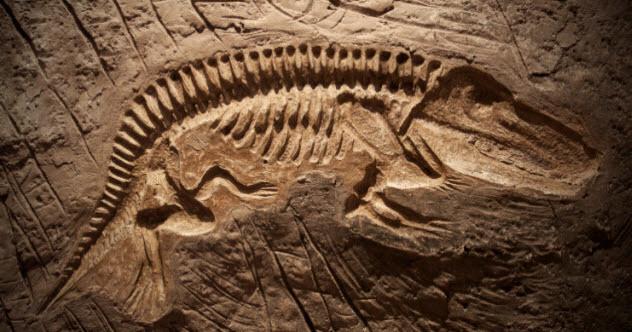
Physical processes after the plant or animal dies, complicated and messy. There is a separate field of science that studies these processes. And though it undoubtedly helps, it does not provide a perfect map of the original living creature. Some solid fossils like insects and carnivorous plants trapped in amber, is rather an exception, but they are all relatively young. For the most part retained only a small part of the body. And as far as we know, fossilization occurs only in solid and hard parts of plant or animal, therefore, experts need to restructure the animals on the pair of teeth and, if lucky, on several bones.
Paleohalinity use fossil data to reconstruct the ancient beings, but they fill in the gaps with details taken from modern descendants of a plant or animal. Often new discoveries confirm the reconstructions. Sometimes — more often in the case of feathered dinosaurs — the first reconstruction to be inaccurate.
Not all fossils окаменели
Scientists love to cling to the words. Paleontologist describing the tree age of 200 million years, into the stone, is more likely to call it "mineralissima" or "semenivska" than fossilized.
Mineralization occurs, because the tree is an empty cavity. Suppose a tree falls in the lake, which contains a lot of dissolved minerals from the nearby volcano, which has released its ashy things in the water. These minerals, especially silicates, fall in the wood, fill the pores and other cavities, so parts of the tree become prisoners in stone and stored.
Wood can also be replaced. It is a longer process. Suppose our tree has not got into the lake in the fall, and left in the soil. Groundwater began to leak and after a certain geological time, minerals replaced all the wood, all the wood parts, molecule by molecule. All the "petrified" trees are good, but paleontologists extract more information from the wood, which was subjected to molecular replacement, and not from mineralizovannaja tree.
Different species have developed similar functions независимо
It turns out that saber-toothed "tiger" was not the only ancient creature with long teeth. Saber-toothed are an example of convergent evolution, when unrelated species independently develop the same useful function. Sabretooth was useful for all kinds of predators that had to hunt animals that exceed them in size.
There are many other examples of convergent evolution. Modern giraffes, for example, are not related to dinosaurs, but have the same long necks, like brahiozavry and other lizards. Long extinct mammal Castorocauda looked and behaved like a modern beaver, although both of these species are not linked.
One of the strangest cases of convergent evolution includes us. Koalas have fingerprints that look the same as ours, although they are marsupials (they have pouches on the belly), and we placental (our unborn young is fed through the placenta). Scientists believe that koalas could produce tiny curls his fingers to make it easier to climb trees like we did and our closest relatives among the apes in the past.
Ancient animals live and thrive сегодня
Very often it happens that some strange species of animal or plant, which was already thought of as extinct, is alive and well. We think of them as relics, not knowing that the Earth stays still a lot of ancient organisms that haven't changed.
As we have noted, the horseshoe crabs have survived many mass extinctions. But they are not alone. Those cyanobacteria, which once killed much of life on Earth, ... and oxygen billions of years ago, is also alive and well. Insects also demonstrate how ancient life. For example, beetles Rove beetles date back to the Triassic period over 200 million years ago). Today this family of beetles might be a part of living organisms in the world. And their ancestors probably were familiar with the Triassic aquatic bugs, like those that sometimes appear in the ponds and scaring people.
The amazing thing is that some types of sulfur producing anaerobic bacteria that were among the first living organisms on Earth, now live with us. Moreover, this is one of those microbes that inhabit our digestive tract. Fortunately for us, Earth's atmosphere was significantly improved for many years. Or most of them, at least for now.published
P. S. And remember, just changing your mind — together we change the world! ©
Source: hi-news.ru

But the fact is that scientists do not know exactly how looked ancient life, though trying to reconstruct her. Constantly there are new discoveries that shed light on what we don't know about the first life forms of the Earth — and this sometimes causes us to rewrite the textbooks.
Life and Earth have evolved together

Most of us think that when the Earth was formed, then the seas came life. This is partly true, but no one knows exactly how did the first life. And appearing, life immediately began to influence the planet's surface. Without plants that pulverize the rocks into the sediment, for example, would not be enough materials to form the tectonic plates, and hence the continents. Without plants, Earth would be a water world.
Believe it or not, more complex life can even change the structure of the global glacial periods, making them less serious "regulatory feedback". Intermittent picture freezing and thawing takes billions of years back in time when Earth didn't have the complex web of life that exists today. Then the glaciers stretched from the poles to the equator, disrupting the entire planetary order.
Since then, as more and more of the life filled surface and sea ice the Earth formed huge glaciers at both poles on a few fingers stretched out in terms of latitude, which never reach the equator.
542 million years ago on Earth there was something mysterious

Experts call sudden increase in the diversity and richness of the fossil record of the Earth, which began 542 million years ago, the "Cambrian explosion". He puzzled Charles Darwin. Why all the ancestors of modern animals appeared literally overnight, geologically speaking?
One of the expert opinions, believes that before the Cambrian period was life, but she didn't have any hard parts. Scientists have analyzed the soft-bodied Precambrian fossils, some of which are not in any way associated with any of the contemporary forms of life today, a young soft-bodied Cambrian fossils from Canada. It turned out that at least 50 million years before the Cambrian "explosion" was developed multicellular life. Scientists do not understand where did the hard part, perhaps a genetic mutation caused a cascade effect that led to the sudden development of shells and skeletons. However, with this theory, not everyone agrees. There is no accurate answer to the question, what happened to life on Earth 542 million years ago.
The first land plants could have caused a mass extinction

During the Devonian period, which was after 150 million years after the Cambrian, it was good to be born a fish on the top of the food chain. Apart from a few stray plants and animals, explore the earth, all living things lived in the sea. Through tens of millions of years all came from the sea to the land, where there is high forest of ferns, mosses and fungi.
And then sea creatures began to die. At least 70% of all invertebrates in the sea gradually disappeared. The Devonian extinction was one of the ten largest mass extinctions in Earth's history.
Many experts believe that the culprit was land plants. They say that the first forest created soil, which broke the rocks into minerals, which eventually flowed into the ocean, causing algal blooms. These algae consume all the oxygen, and sea creatures suffocated. Worse, the algae are then eaten by other organisms and become hydrogen sulfide. He turned sea water into acid. Plants also are unable to escape. They sucked from the air enough carbon dioxide to cause an ice age, which killed many of them too.
Fortunately, there were some species that survived even these hellish conditions at sea or on land.
Ancient life was able to adapt

The complete disappearance of the species was never, even when the planet was a massive asteroid. For example, at a young age of the Earth, the oxygen produced by the new-fangled cyanobacteria, was toxic to many early life forms. While many haters of the oxygen was lost, others have adapted and become more complicated. The extinction occurred from time to time, but Ian Malcolm from "Jurassic Park" was right when he said that life will always find a way to continue the movement.
According to fossils, survival and extinction more influence on demographics. If the world were scattered a large group of species, there was a chance that at least one or two individuals will experience the extinction. Among other conditions — the environmental conditions and genetic factors that make species vulnerable or to allow you to adapt.
The horseshoe crabs were the best — they have survived four major mass extinctions and countless smaller ones.
The search for Martian fossils change our understanding of the Earth

What is a fossil? At first glance, that's all dug out of the ground, but this approach can be misleading when we try to understand ancient life.
Fossils is difficult to determine. Sometimes it's hard to tell whether the bubble in the Precambrian fossil bacteria rock or just rock. What life is and how to determine its fossils? The most interesting thing in this issue can help us study outer space.
At the moment attention is focused on Mars, since besides Earth, this planet offers the friendliest of the planetary climate for life. Once there was even a flowing river and a lake. If life existed in these ancient waters could remain fossils. This gives rise to the obvious question. If we try to understand what life was like on Earth 542 million years ago, how are we going to Mars remains an age of 4 billion years?
Astrobiologists are working on this, not disdaining the help of paleontologists. Understanding what might be ancient fossils on Mars allows scientists to hone attitude to what is not a fossil remains on Earth.
Place окаменелостей

Most of the fossils that we have seen, probably formed in water. Water is good for creating fossils. The earth is not really. In shallow water near the beach, for example, a lot of precipitation from rivers and streams quickly buries clams, and other sea creatures, preserving them.
Tropical rain forest can be as rich and saturated as shallow marine shelf, but he will not be able to form many fossils. The plants and animals that will die, will decompose quickly due to the humidity. In addition, the predators will quickly carry away the corpses, and the remainder will destroy the wind and rain.
Standing water in depressions like wetlands and lagoons is also suitable because it does not contain much oxygen, and there live not many organisms of decomposition. In addition, there is also the displacement of the fossils in the direction of the bodies with solid parts, as well as groups of animals and plants, which are large, long-lived and dispersed across a wide geographic region. Time is also affected. Geological processes like the structure of mountains and the subduction of plates, as a rule, wash the fossils, why it is so difficult to find the oldest of them.
Rare fossils resemble living существо

Physical processes after the plant or animal dies, complicated and messy. There is a separate field of science that studies these processes. And though it undoubtedly helps, it does not provide a perfect map of the original living creature. Some solid fossils like insects and carnivorous plants trapped in amber, is rather an exception, but they are all relatively young. For the most part retained only a small part of the body. And as far as we know, fossilization occurs only in solid and hard parts of plant or animal, therefore, experts need to restructure the animals on the pair of teeth and, if lucky, on several bones.
Paleohalinity use fossil data to reconstruct the ancient beings, but they fill in the gaps with details taken from modern descendants of a plant or animal. Often new discoveries confirm the reconstructions. Sometimes — more often in the case of feathered dinosaurs — the first reconstruction to be inaccurate.
Not all fossils окаменели

Scientists love to cling to the words. Paleontologist describing the tree age of 200 million years, into the stone, is more likely to call it "mineralissima" or "semenivska" than fossilized.
Mineralization occurs, because the tree is an empty cavity. Suppose a tree falls in the lake, which contains a lot of dissolved minerals from the nearby volcano, which has released its ashy things in the water. These minerals, especially silicates, fall in the wood, fill the pores and other cavities, so parts of the tree become prisoners in stone and stored.
Wood can also be replaced. It is a longer process. Suppose our tree has not got into the lake in the fall, and left in the soil. Groundwater began to leak and after a certain geological time, minerals replaced all the wood, all the wood parts, molecule by molecule. All the "petrified" trees are good, but paleontologists extract more information from the wood, which was subjected to molecular replacement, and not from mineralizovannaja tree.
Different species have developed similar functions независимо

It turns out that saber-toothed "tiger" was not the only ancient creature with long teeth. Saber-toothed are an example of convergent evolution, when unrelated species independently develop the same useful function. Sabretooth was useful for all kinds of predators that had to hunt animals that exceed them in size.
There are many other examples of convergent evolution. Modern giraffes, for example, are not related to dinosaurs, but have the same long necks, like brahiozavry and other lizards. Long extinct mammal Castorocauda looked and behaved like a modern beaver, although both of these species are not linked.
One of the strangest cases of convergent evolution includes us. Koalas have fingerprints that look the same as ours, although they are marsupials (they have pouches on the belly), and we placental (our unborn young is fed through the placenta). Scientists believe that koalas could produce tiny curls his fingers to make it easier to climb trees like we did and our closest relatives among the apes in the past.
Ancient animals live and thrive сегодня

Very often it happens that some strange species of animal or plant, which was already thought of as extinct, is alive and well. We think of them as relics, not knowing that the Earth stays still a lot of ancient organisms that haven't changed.
As we have noted, the horseshoe crabs have survived many mass extinctions. But they are not alone. Those cyanobacteria, which once killed much of life on Earth, ... and oxygen billions of years ago, is also alive and well. Insects also demonstrate how ancient life. For example, beetles Rove beetles date back to the Triassic period over 200 million years ago). Today this family of beetles might be a part of living organisms in the world. And their ancestors probably were familiar with the Triassic aquatic bugs, like those that sometimes appear in the ponds and scaring people.
The amazing thing is that some types of sulfur producing anaerobic bacteria that were among the first living organisms on Earth, now live with us. Moreover, this is one of those microbes that inhabit our digestive tract. Fortunately for us, Earth's atmosphere was significantly improved for many years. Or most of them, at least for now.published
P. S. And remember, just changing your mind — together we change the world! ©
Source: hi-news.ru







